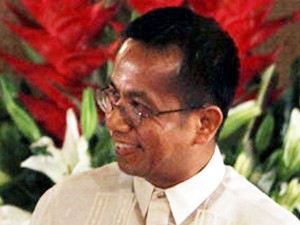Economic growth may exceed gov’t expectations
Growth of the Philippine economy may actually exceed government expectations for this year as the country’s manufacturing sector and robust domestic consumption fend off economic shocks from Europe and the United States.
Socioeconomic Planning Secretary Arsenio Balisacan on Wednesday said that economic growth, as measured by the expansion of the gross domestic product (GDP), could exceed the administration’s target of 6 to 7 percent.
The country’s GDP, which is a measure of the value of all goods and services delivered in a certain period, grew at a faster-than-expected 7.8 percent in the first quarter of 2013. This made the Philippines Asia’s fastest-growing economy, outpacing regional giant China.
“If you look at the sources of growth, a big part of that are domestic (factors). And there’s so much space for domestic growth,” Balisacan said.
The government’s effort to address the infrastructure backlog in the country may be a “major source of growth,” he said, adding that consumption would also continue to be an important component of GDP expansion.
Article continues after this advertisementHe said the US Federal Reserve’s possible move to scale back its accommodative policies should be taken as a sign of a stronger recovery of the world’s largest economy.
Article continues after this advertisement“That’s good because … global trade will improve,” Balisacan said, explaining that this would aid the recovery of local exports.
The National Statistics Office (NSO) said the value of Philippine exports fell by 12.08 percent year-on-year to $4.04 billion, prompting the administration’s to lower its official export growth forecast to 10 percent.
But according to Finance Secretary Cesar Purisima, emerging markets like the Philippines are expected to grow much faster than developed nations in the coming years.
“If we build a good set of industries that can create employment, then they can be consumption engines, and that should drive growth,” said Purisima.
